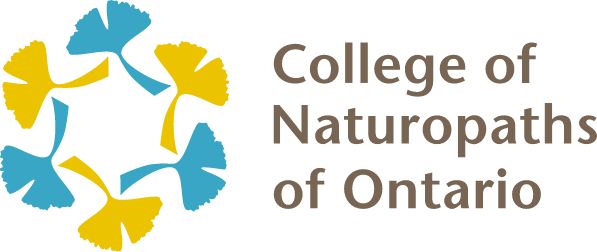Controlled Acts
Under Ontario law, only authorised health care professionals can perform one or more of the thirteen controlled acts listed in the Regulated Health Professions Act, 1991. Different health care professionals may be permitted to perform certain controlled acts, in whole or part. Under the Naturopathy Act, 2007, the controlled acts authorised to Registrants are the following:
- Putting an instrument, hand or finger beyond the labia majora but not beyond the cervix.
- Putting an instrument, hand or finger beyond the anal verge but not beyond the rectal-sigmoidal junction.
- Administering, by injection or inhalation, a prescribed substance.
- Performing prescribed procedures involving moving the joints of the spine beyond the individual’s usual physiological range of motion using a fast, low amplitude thrust.
- Communicating a naturopathic diagnosis identifying, as the cause of an individual’s symptoms, a disease, disorder or dysfunction that may be identified through an assessment that uses naturopathic techniques.
- Taking blood samples from veins or by skin pricking for the purpose of prescribed naturopathic examinations on the samples.
- Prescribing, dispensing, compounding or selling a drug designated in the regulations.
The General Regulation (Ontario Regulation 168/15) is among several regulations that govern the profession. Part II (Controlled Acts) of the General Regulation establishes the standards of practice for the profession when they are performing controlled acts on a patient.
Requirements to perform a controlled act
A Registrant is not authorised to perform a controlled act unless:
- They have a naturopath–patient relationship with the individual.
- They have informed the patient of the purpose of the controlled act, the risks of it being performed on them, and alternative treatments that the Registrant knows or should know are available within naturopathy or by Registrants of other regulated health professions.
- They have obtained informed consent from the patient.
- They have determined that the patient’s condition warrants the performance of the controlled act, having considered the known risks and benefits to the patient, the likely outcomes, and safeguards and resources available to manage any outcomes and any other relevant circumstances.
- They have ensured that appropriate infection control procedures are in place at all times, and the controlled act is performed in an environment that is clean, safe, private and comfortable for the patient.
- They have the knowledge, skill and judgment to determine whether the performance of the controlled act is necessary, and to perform the controlled act safely and ethically.
Certain controlled acts carry additional or alternate requirements, outlined within the description of each controlled act within this section.
